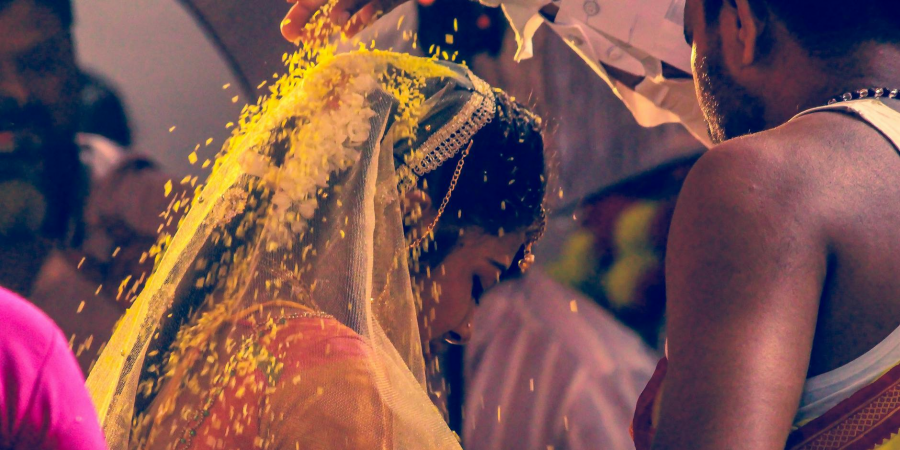

In a recent Telugu wedding, a North Indian guest became captivated by the elaborate rituals and deep cultural heritage that define a traditional Telugu wedding. This encounter sparked a conversation about the cherished customs central to Telugu weddings, leading us to explore these timeless traditions in detail. Join us as we dive into the rich tapestry of Telugu wedding rituals, uncovering their significance and stories.
Essential Rituals in a Telugu Wedding
Ganesh and Gowri Pooja
The groom takes part in the Ganesh Pooja, the initial ceremony at the mandap. This ritual is performed to seek blessings for a joyful and prosperous life for the couple and to ensure that the wedding proceedings go smoothly.
At the bride's home, the Gowri Pooja is conducted, where the bride prays to Goddess Gauri, who symbolizes motherhood and fertility. She requests blessings from the goddess and her consort, Lord Shiva, for a harmonious and ideal marriage.
Mangala Snanam
‘Mangala’ means sacred, and ‘Snanam’ refers to a bath. The Mangala Snanam ritual, a well-known tradition, occurs early on the main wedding day. At a designated auspicious time, both the bride and groom receive ceremonial baths.
Following the Mangala Snanam, a “Mangala Aarti” is performed. During this ritual, a small lamp is lit, and turmeric, vermilion, and sandalwood are arranged on a Thali (plate). This Thali is then circled around the bride and groom to dispel negative energies and seek divine blessings.
Mangalsutra Dharanam
In Hindu weddings, the mangalsutra holds immense importance. This sacred ritual involves a holy yellow thread, known as the mangalsutra, which is first coated with turmeric. The groom ties the mangalsutra around the bride’s neck, securing it with two gold “Sutralu” pendants in three knots during the “sannai mellam” ceremony.
Each knot represents one of the following: Manasa (thoughts), Vacha (speech), and Karmana (actions). This rite symbolizes the union of the couple on physical, mental, and spiritual levels. On the sixteenth day after the wedding, the yellow thread is replaced with a gold chain.
Jeelakkara Bellam
Jeelakkara Bellam is a prominent ritual in Hindu Telugu weddings. The term “Jeelakara” refers to cumin, and “Bellam” refers to jaggery. The ceremony begins with the couple’s hands being coated with a paste made of cumin and jaggery. During an auspicious moment known as Sumuhurtham, the bride and groom apply this paste to each other’s heads while their hands are raised above a curtain. The moment the curtain is removed signifies their legal marriage.
This ritual symbolizes the couple’s commitment to be as inseparable in body, mind, and soul as the cumin and jaggery paste. Following the ritual, the bride and groom are covered in akshintalu (turmeric rice), which is sprinkled by elders, family members, and guests.
